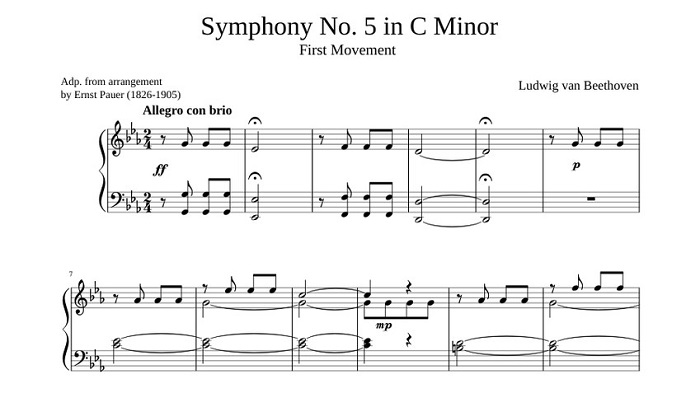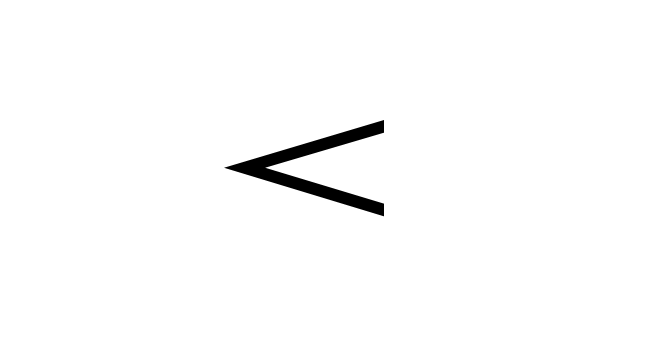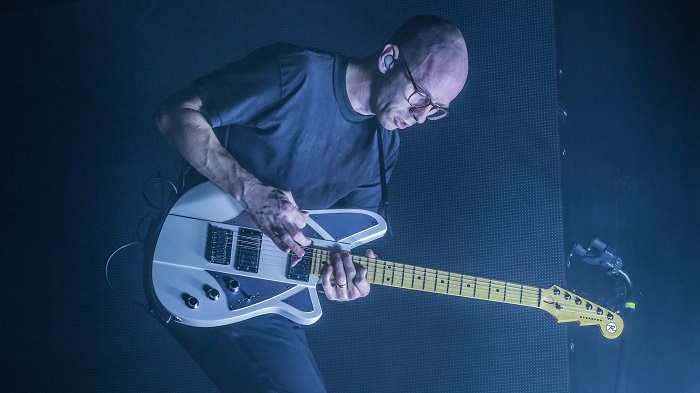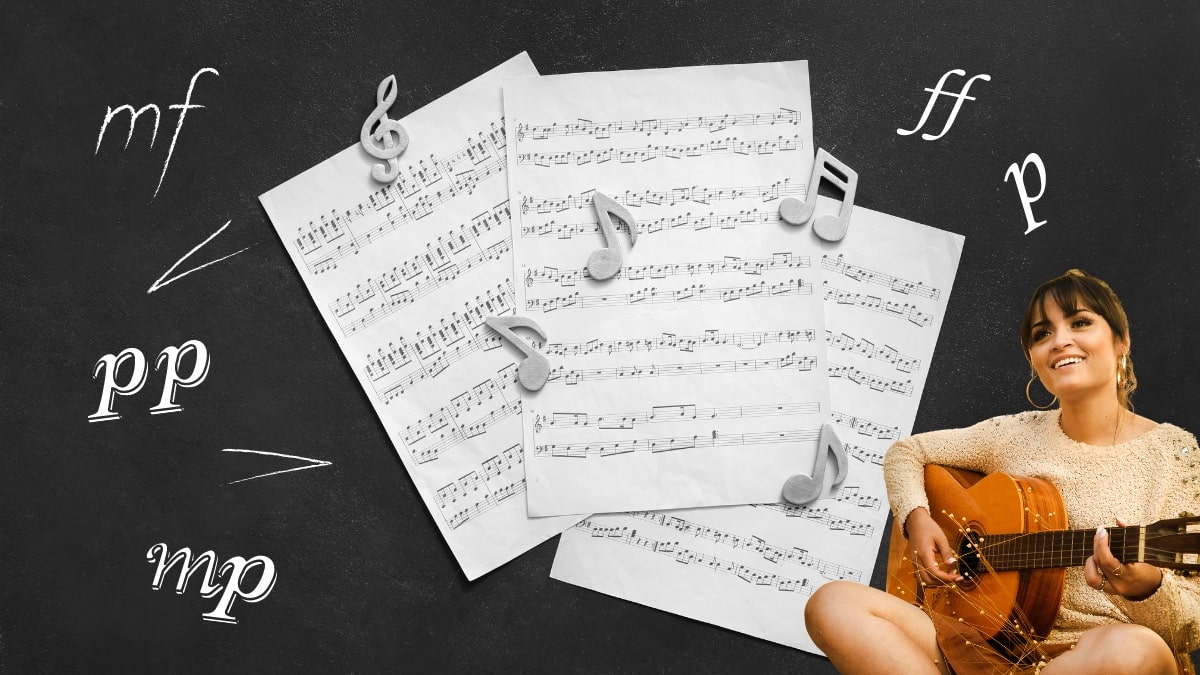A lot of words from the realm of music have made their way into our daily lives. If you know the words forte or crescendo, for example, then congrats! You already know a little bit about the topic of this article.
Of course, our understanding of these words as conversation pieces isn’t an accurate definition of how they’re used in music. Crescendo and forte are two of the terms used to describe dynamics in music.
Understanding what dynamics mean in music is as simple as a Google search. That’s probably how you ended up here. Getting to know the real impact of dynamics in music, however, goes beyond the simple definition. They’re a powerful instrument in the hands of a capable composer.
What Are Dynamics in Music?
The definition of dynamics is pretty simple: it’s the volume of a certain note or phrase in music. It can sometimes be referred to as the direction of the music, but the meaning of the word direction can change depending on the context so be mindful of that.
You know how in some music, there are parts that are almost whispered by the instruments and other parts that are yelled out? Well, just in case you don’t, there is no better example for this than Beethoven’s 5th symphony.
The first few notes in this symphony are played loudly with a lot of vigor, and then things die down a bit. Then, they go back up to the same initial intensity and down again. These differences in the intensity with which a note is played are what dynamics mean.
The most straightforward way to understand musical dynamics and their types is by relating them to the volume of our own voices when we speak.
In the following sections, we’ll go through the two main categories of dynamics, the different types under these categories, and see how they compare to our voices.
Static Dynamics

A bit of an oxymoron but not actually that complicated; static dynamics describe the directions that start and end on the same level. That means that the whole “phrase” in the musical piece starts and ends with the same intensity, kind of like the first two phrases of Beethoven’s 5th symphony. They are loud, through and through.
The dynamic of a musical passage ranges from very quiet to very loud. These mundane words might’ve been too unbecoming for the Renaissance composers and connoisseurs of the art, though. So instead, they used some Italian terms to express these dynamics.
But really, the reasons behind using Italian terms in composing are actually quite compelling and covered in this section.
Piano
Completely unrelated to the instrument, piano in this context means quiet. It refers to when a part of the music is played softly. To indicate that a certain phrase or note should be played softly in sheet music, you’d write a “p” underneath the note.
Forte
Forte, also a word that found its way into the English language, means strong or loud. You can indicate that a note should be played loudly with an “f” written under the note in the sheet music.
Variations

Trying to explain to a musician exactly how intense a certain melody should sound with just the terms piano or forte can be tricky, to say the least. That’s how the following variations came to be.
These affixes became part of the musical notation rules because they give you a better understanding of just how softly or loudly you should as a musician play a note.
Mezzo-
Mezzo is a prefix that means mid or moderate and can be added to piano or forte. It’s pronounced as “Metso.”
You can say this part is played “a little quietly” by putting mezzo-piano or “mp” in the notation. You can also do the same for “a bit loud” by putting mezzo-forte or “mf“.
-issimo
The suffix -issimo, may be familiar to you from a word like Bellissimo, simply means very. It can be added to piano or forte to indicate that a certain part should be played very softly or loudly.
But instead of being added to the word as is, you remove the last vowel. So “very quietly” becomes pianissimo, and “very loudly” becomes fortissimo. These musical directions are notated by using “pp” or “ff“.

Now here’s the funny part. You can actually double the effect of this suffix by just adding more of it. It’s a mouthful but super easy to write.
Pianississimo, easily enough, gets a triple “ppp” notation. Fortississimo a triple “fff“.
Pianissississimo, yes, that’s a real thing, and fortissississimo will take an extra letter in the notation.
It’s common to see those with up to three “ppp“s or “fff“s (aka pianississimo or fortississimo), but there have been musical pieces written with six and even eight letters. I’m fairly certain that that’s the composer-equivalent of adding 13 exclamation points to a text.
Changing Dynamic
As you can probably deduce from the name (and the other category), changing dynamics are the beginning and end of a note on different intensity levels.
A note could start off very softly and increase in volume, or the other way around. There is also another type of change that can happen in the direction of a piece.
Crescendo

The most familiar of the bunch is a crescendo. Crescendo is when the musician starts playing softly then gets progressively louder. The word itself means increasing, growing, or developing in Italian.
Crescendo is expressed in musical scores with an abbreviated “cresc.” or a symbol resembling a hairpin—and has the same name—with the open end pointing to the right: “<“.
Decrescendo
A decrescendo is the opposite of a crescendo, with the volume sliding downwards. The word means decreasing in Italian.
Decrescendo is expressed with the same hairpin symbol but pointing to the left: “>”.
Diminuendo
Now, this one is the subject of some discourse among musicians and composers. The word itself means diminishing in Italian. It’s generally used interchangeably with decrescendo, but some would tell you that it also changes the speed with which the music is played.
The idea is that a diminuendo notation in music doesn’t only lower the volume but also the tempo. However, this is not a common opinion. So regardless of the original meaning, it is now used as a word synonymous to decrescendo.
Diminuendo is simply abbreviated to “dim.” in sheet music.
Sforzando

Pronounced as “Sfor-tsan-doh,” this direction means that the music goes abruptly louder and then back to its original state.
It’s notated as “sfz.” in musical scores. This is probably the trickiest to fully understand from text, but I’ll try my best to explain the intonation it describes.
Imagine an English aristocrat pompously telling a peer this sentence:
“This is of utmost importance.”
Weird example, I know, but bear with me. The volume of our aristocrat’s voice starts off relatively soft as he says the first couple of words in the sentence.
His voice then goes significantly higher as he says the word “utmost,” then returns to normal range in the word “importance.” This sudden wave of emphasis in the volume, my friends, is a sforzando.
A sforzando note will jump up to forte, then go back to piano. Sometimes it’s mixed up with forte-piano, which is quite similar, with the only difference being that an “spz” would not have that abrupt accent in the note. Instead, it would be a clear and static forte that then changes into a static piano.
Why Do We Use Italian in Music Notation?

So you’ve learned eight different words—and affixes—while learning about just one concept in the world of sound. Why is it that we use the Italian language for these terms and many more?
Let’s take this chance to understand what the saying “Italian is the language of music” really means. Apart from it being a very musical language in its own right, some of the earliest and biggest inventions in the history of music came from Italy.
For example, the very concept of musical notation as it exists now was invented by an Italian monk in the 11th century. Guido D’Arezzo also invented the musical scale and assigned letters to different tones (do, re, mi, fa, etc.)
It doesn’t end there; most people will instantly recognize the name Stradivarius as one of the most innovative, well-built, and expensive brands of violins in the world. Also built by the Italian family Stradivari.
Italians were the first to create a symphony and an array of compositional forms basically. They invented ballet and opera during the Italian renaissance.
In short, Italian Renaissance composers ushered the classical arts of music we know today into our world.
If not just for the recognition of that, the use of Italian can also be attributed to tradition. After all, they were the first to do a lot of these performances, and they continued to be the only artists in this domain for years. Italian composers and music took Europe by storm in the Renaissance, securing their hegemony over the art.
Finally, just like the fields of physics, astronomy, and medicine have their terminology, music does too. For all of these fields, the terms come from the inventor and pioneer of each concept.
That happened over years of human discovery, in loads of different cultures and countries. But in the case of musical composition, the most groundbreaking inventions were all in Italy, all in the same era.
Why Exactly Are Dynamics So Important?

Dynamics have the power to completely change the impact a musical piece has on its listeners. Not only do they create intense emotions in the piece, but they could also change how it sounds entirely.
Dynamics Change the Sound of Each Instrument
Any great composer should know how each instrument sounds in piano and forte because they’re usually considerably different.
The instruments that sound most different between piano and forte are wind instruments, but that extends to all instruments out there, from pianos (the instrument this time) to guitars.
Think of a guitarist strumming softly on their instrument vs. one who’s really going at it. Even if they’re playing the exact same tune, the guitar itself sounds deeper and more agitated in forte.
Dynamics Insert Emotions in Music
Dynamics can convey a wide range of emotions in any kind of music, whether it’s a magical Debussy piece that feels like a walk in an enchanted forest or some goosebump-inducing electric guitar performance.
This is especially evident in the genre of film music. Creating music for a movie scene or a TV show almost depends on having expressive dynamics in the piece’s composition.
The first example that comes to mind is, well, anything created by Hans Zimmer. Specifically, pieces like Time from the movie Inception or S.T.A.Y from Interstellar.
These two modern masterpieces start off with a repetitive melody that’s played very softly, then gradually gets louder and louder as the rest of the piece plays out. This creates a feeling of eeriness that is amplified by the melody’s dynamics.
Dynamics Can Mimic Internal Monologue

Music can invoke a lot of feelings for sure, but have you ever heard a piece of music that feels like it’s almost a reflection of your own thoughts?
Creating the feeling that a piece of music sounds like the voice in your head requires true talent, definitely not just dynamics. But dynamics are an integral part of it.
If you didn’t instantly think of that one piece of music that stuns you with its eloquence, let me introduce you to one: Beirut by Ibrahim Maalouf.
When you hear the trumpet in this song, you can almost assign clear meaning to each phrase of the piece. From the ruminating at the beginning with a pianissimo intro to the feelings of grief and sadness conveyed by a diminuendo, and going into full-blown anger and defiance, or even resentment, near the end of the piece with a strong crescendo.







